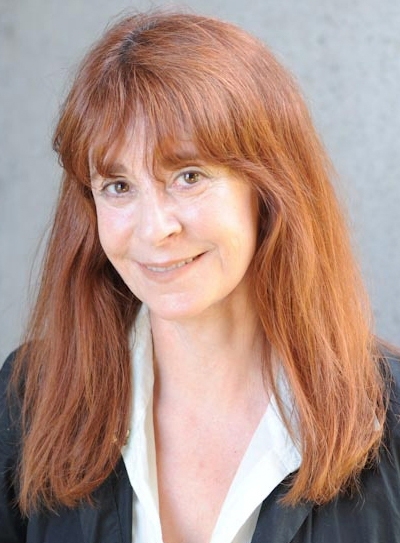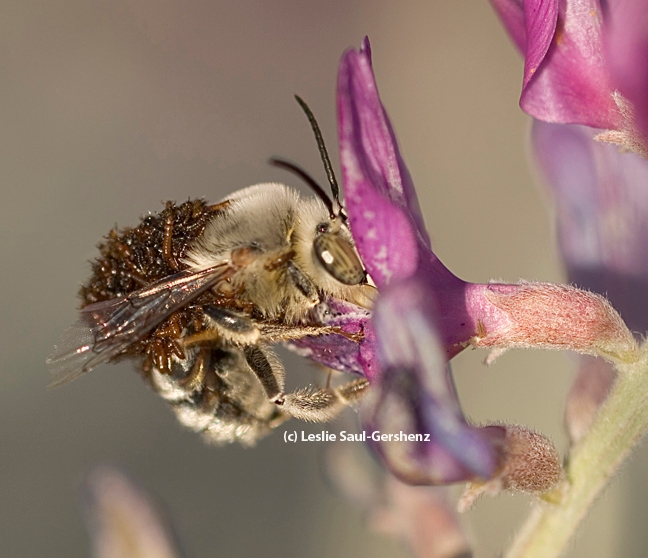
However, there may be sad ending...more about that later.
Members and their guests will gather Nov. 7 at 9:15 a.m. at their meeting site, the Contra Costa Mosquito and Vector Control District conference room, 155 Mason Circle, Concord. for coffee and registration.
Then, at 9:30 a.m., Saul-Gershenz will discuss “Meloid Parasites of Solitary Bees." A graduate student in the Neal Williams lab, UC Davis Department of Entomology and Nematology, and a co-founder of SaveNature.Org, Saul-Gershenz researches a solitary ground-nesting bee, Habropoda pallida and its nest parasite, a blister beetle, Meloe franciscanus, found in the Mojave National Preserve.
She is the lead author of “Blister Beetle Nest Parasites Cooperate to Mimic the Sex Pheromone of the Solitary Bee Habropoda pallida (Hymenoptera: Apidae)," co-authored by professor Jocelyn G. Millar and staff research associate J. Steven McElfresh, both of UC Riverside. The Mojave National Preserve Science News published the peer-reviewed research in its April 2012 edition.
"The solitary bee is the first native bee to emerge in the spring on the Kelso Dunes in the Mojave National Preserve," said Saul-Gershenz. “The adult beetles emerge on the dunes in the winter months at Kelso Dunes and feed exclusively on the leaves of Astragalus lentiginosus, which leafs out in January."
The bee's emergence is generally synchronized with the onset of blooms of the Borrego milkvetch, which is the sole host plant of adults of the blister beetle at Kelso Dunes.
The UC Davis ecologist said the larvae of the parasitic blister beetle produce a chemical cue or a pheromone similar to that of a female solitary bee to lure males to the larval aggregation. The larvae attach to the male bee and then transfer to the female during mating. The end result: the larvae wind up in the nest of a female bee, where they eat the nest provisions and likely the host egg.
The work of Saul-Gershenz, Millar and McElfresh appears in a newly published academic book, Sensory Ecology, Behaviour, and Evolution (Oxford University Press) by Martin Stevens. Another book, pending publication in December, also will contain their work: the second edition of Pheromones and Animal Behaviour (Cambridge University) by Tristram Wyatt.
Previously, three other books summarized their research:
Keeping the Bees: Why All Bees Are at Risk and What We Can Do to Save Them by Laurence Packer and published in 2011 by HarperCollins Publishers, Ltd.
Cuticular Hydrocarbons: Biology, Biochemistry and Chemical Ecology by editors A. Bagnères-Urbany and G. Bloomquist and published in 2010 by Cambridge University Press.
The Other Insect Societies by James T. Costa, and published in 2006 by the Belknap Press of Harvard University Press.
Now, back to what may be a sad ending.
Following Saul-Gershenz' one-hour talk, the Nor Cal Entomology Society members will discuss the future of the organization, founded in 1930. Then it was known as the Northern California Entomology Club. Membership continues to be open to all interested persons, with dues at $10 a year. Currently the society meets three times a year: in Sacramento, at UC Davis, and in Concord.
Nor Cal Entomology president Robert Dowell of the California Department of Food and Agriculture will moderate the disussion.
“We have reached a critical juncture in the existence of the organization,” secretary-treasurer Eric Mussen, Extension apiculturist with the UC Davis Department of Entomology and Nematology, wrote to the members in an email. “At its beginning, the society served as the meeting place for entomologists mostly from UC Berkeley and UC Davis, as well as other members who appreciated their lively discussions of research and pest control. Representatives from industry and regulatory establishments also participated. A revolving system of society chairs was instituted and membership was good.”
“Over time, the climate has changed. UC Berkeley no longer has an entomology department or hardly any entomologists anymore,” said Mussen, who will retire from UC Davis in June 2014.
Those planning to attend to hear the talk and discuss the future of the organization should contact Mussen at ecmussen@ucdavis.edu or telephone him at (530) 753-0472 by Nov. 1. And oh, yes, there's a luncheon to be served by Kinder's Meats. Mussen is taking reservations (and payment) for that, too.
Attached Images:
